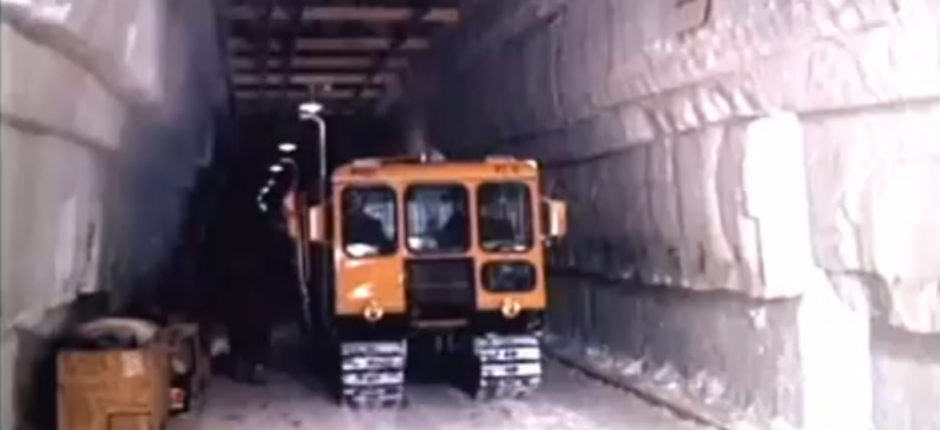Danish scientists will study pollution at abandoned US military base in Greenland this summer

Since 2014, Greenland has been able to harp on about Denmark’s refusal to study pollution levels at Camp Century, an American Cold War base built into the ice cap in 1960 and abandoned in 1966.
This tune now looks to be nearing its end after officials in Nuuk announced earlier this month that a team of Danish experts will travel to Greenland this summer to inspect the site.
Scientists from the organisations that will take part have confirmed they expect to be sent to Camp Century this summer. Their expedition is unlikely to unearth anything new: the presence of pollution there is well-documented, including in a paper published in August that reported that the half-square-kilometer area (about 124 acres) contained large volumes of a variety of pollutants, ranging from sewage to low-level radioactive waste.
The authors came up with estimates for how much of the various types of pollutants were present; it will be the job of the Danish scientists to start making more precise measurements.
Another question will be what to do with it. Currently, the waste is frozen some 50 meters (about 160 feet) under the ice – nearly 40 meters deeper than when the Americans left it behind. At the time, it was believed that the constant growth of the ice cap meant the waste would be interred forever. Yet, even with without global warming, this was unlikely ever to be the case: “The question is whether it’s going to come out in hundreds of years, in thousands of years, or in tens of thousands of years,” James White, an American climate scientist, said in a statement issued by the American Geophysical Union describing the paper’s findings. Given the ice cap’s current rate of decline, the authors reckon it could emerge within a century.
From the scientific perspective, the best advice appears to be to be to leave it where it is for now. “Cleaning it up will leave a bigger mess behind than what’s already there,” Jørgen Peder Steffensen, a physicist specialising in ice cores, told the Danish media. Instead, he suggests having a plan ready for the day the pollution does emerge and then to move in and remove it swiftly.
Politically, the matter is less straightforward.
Nuuk has expressed its satisfaction at Copenhagen’s decision to send experts to Camp Century, but government officials consider it only a partial victory. In a commentary published in AG, a newspaper published by this website’s parent company, Vittus Qujauqitsoq, the foreign minister, noted that neither Washington (which put the waste there) nor Copenhagen (which gave its permission to do so) has shown interest in claiming responsibility to clean it up.
This, according to Qujaukitsoq, risks leaving Greenland with the responsibility for dealing with waste left behind at a base it was never told was being built, let alone what its purpose was or what was to be left behind.
Ultimately, what Nuuk may be most interested in is not how much pollution the Danish experts find at Camp Century this summer but what their findings lead to. The base is the most notorious of America’s disused sites in Greenland, but it is far from the only one. According to Nuuk, there are 30 above-ground sites used by the US military during the Second World War and the Cold War that need cleaning up right now.
Until it can be established who is responsible for doing so, Nuuk’s harping seems likely to go on, if only in a different tune.